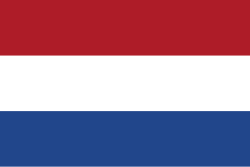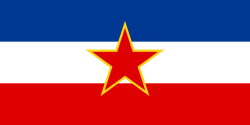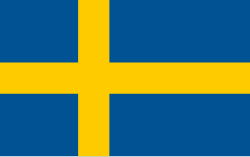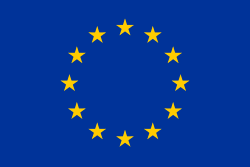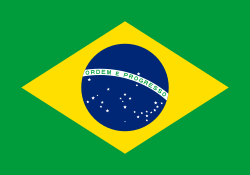Wayne Rainey
| Wayne Rainey | |
 | |
| Född | Wayne Wesley Rainey 23 oktober 1960 (63 år) Downey, USA |
|---|---|
| Medborgare i | USA |
| Utbildad vid | Santa Fe High School |
| Sysselsättning | Motorcykelförare, team manager |
| Utmärkelser | |
| FIM Gold Medal for Motorcycle Merit (1993)[1] Motorcycle Hall of Fame (1999) MotoGP Hall of Fame (2000) International Motorsports Hall of Fame (2007) Motorsports Hall of Fame of America (2008) | |
| Redigera Wikidata | |
Wayne Rainey, född 23 oktober 1960 i Downey i Kalifornien, är en amerikansk framgångsrik före detta roadracingförare.
Rainey var en av de mest framgångsrika amerikanska förarna i slutet på 1980-talet och början på 1990-talet. Han började sin karriär på en Honda 50cc minibike när han var sex år gammal i lokala dirt track-tävlingar (motsvarande speedway). Rainey steg snabbt i klasserna och nådde den högsta serien 18 år gammal 1979 men hade där inte något konkurrenskraftigt material och kunde därför inte hävda sig mot sina medtävlare. 1980 körde han sitt första roadrace på lokal klubbnivå med sponsring av Kawasaki och 1981 vann han ett 250 cc-race på Loudon i New Hampshire. Efter vinsten insåg Kawasaki vilken talang han hade och kontrakterade honom för AMA Superbike-serien 1982 där Rainey hamnade i samma stall som Eddie Lawson. 1983 vann hann AMA-serien och 1984 hade han sitt första inhopp i 250 cc-klassen på VM-nivå. 1988 började han köra 500 cc på heltid, då på Yamaha, och 1990, 1991 och 1992 tog han tre titlar i följd.
1993 ledde Rainey VM, men hans karriär tog slut efter en olycka på Misano, då han förlamades från bröstet och nedåt, vilket gav titeln till landsmannen Kevin Schwantz. Olyckan skedde när Rainey ledde tävlingen och försökte rycka ifrån Schwantz och stallkamraten Luca Cadalora. Han fick ett kast och gjorde en relativt lätt vurpa, men när han landade i sandfållan började han tumla runt, vilket knäckte ryggraden.
Rainey blev för sina insatser invald i International Motorsports Hall of Fame 2007.
VM-säsonger
| Säsong | Klass | Plac. | Poäng | Segrar | Motorcykel |
|---|---|---|---|---|---|
| 1984 | 250GP | 8 | 29 | - | Yamaha |
| 1988 | 500GP | 3 | 189 | 1 | Yamaha |
| 1989 | 500GP | 2 | 210,5 | 3 | Yamaha |
| 1990 | 500GP | 1 | 255 | 7 | Yamaha |
| 1991 | 500GP | 1 | 233 | 6 | Yamaha |
| 1992 | 500GP | 1 | 140 | 3 | Yamaha |
| 1993 | 500GP | 2 | 214 | 4 | Yamaha |
Segrar 500GP
| Pole position 500GP
|
Källor
- ^ läs online, www.fim-moto.com .[källa från Wikidata]
Media som används på denna webbplats
Icon of simple gray pencil. An icon for Russian Wikipedia RFAR page.
Flag of the Socialist Federal Republic of Yugoslavia (1946-1992).
The design (blazon) is defined in Article 4 of the Constitution for the Republic of Yugoslavia (1946). [1]
Flag of the Socialist Federal Republic of Yugoslavia (1946-1992).
The design (blazon) is defined in Article 4 of the Constitution for the Republic of Yugoslavia (1946). [1]
The civil ensign and flag of Belgium. It is identical to Image:Flag of Belgium.svg except that it has a 2:3 ratio, instead of 13:15.
The Flag of Europe is the flag and emblem of the European Union (EU) and Council of Europe (CoE). It consists of a circle of 12 golden (yellow) stars on a blue background. It was created in 1955 by the CoE and adopted by the EU, then the European Communities, in the 1980s.
The CoE and EU are distinct in membership and nature. The CoE is a 47-member international organisation dealing with human rights and rule of law, while the EU is a quasi-federal union of 27 states focused on economic integration and political cooperation. Today, the flag is mostly associated with the latter.
It was the intention of the CoE that the flag should come to represent Europe as a whole, and since its adoption the membership of the CoE covers nearly the entire continent. This is why the EU adopted the same flag. The flag has been used to represent Europe in sporting events and as a pro-democracy banner outside the Union.Flag of the Federation of Rhodesia and Nyasaland
Författare/Upphovsman: Rikita, Licens: CC BY-SA 3.0
Wayne Rainey, 1989 Japanese GP
Flag of the Federation of Rhodesia and Nyasaland




